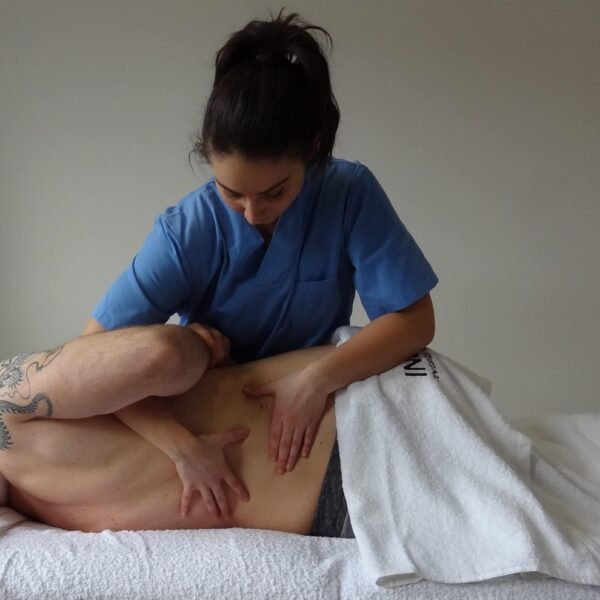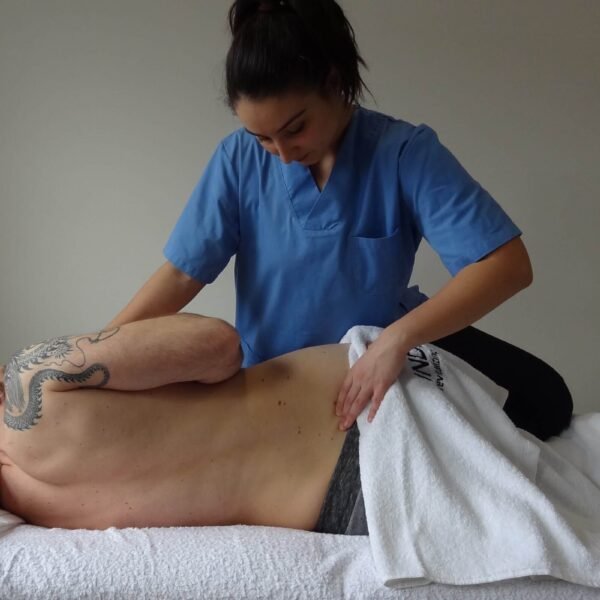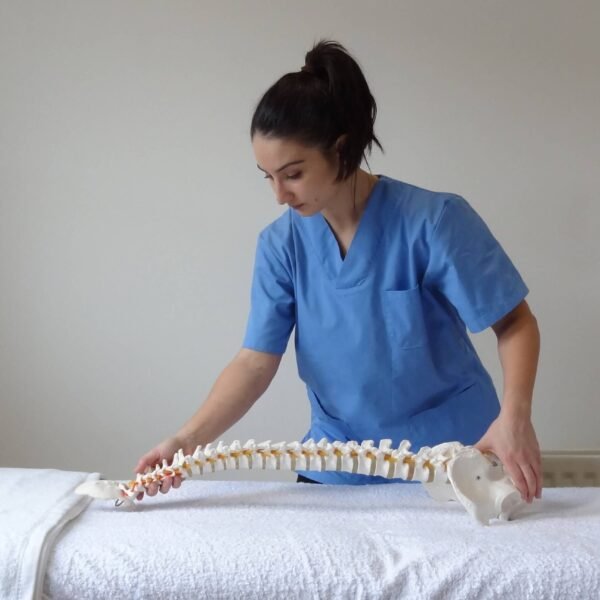At The Manual Therapy Clinic, our osteopaths are trained in manual techniques to take a holistic approach to treating patients.
By adopting a holistic point of view, they can use manual musculoskeletal (MSK; consisting of bones, joints, muscles, tendons, and ligaments) manipulations to correct structural unbalances and aid with recovery.
What is Osteopathy?
Osteopathy is a complementary medicine discipline that looks at the body as one interconnected system. It aims to restore mobility and function by correcting misalignments in the body structure. These professionals must attain higher education to gain official degrees. Our therapists are highly qualified in osteopath training to provide the best quality service to their patients.
Practitioners using osteopathic treatment conduct a detailed clinical examination. After a diagnosis, they will apply osteopathic techniques to correct body structures when appropriate. This is an excellent tool to complement any therapy and ensures the most accurate treatment for a patient’s condition.

What techniques do our osteopath experts use?
At The Manual Therapy Clinic, our therapists are highly skilled in a variety of osteopathic manipulations tailored to each patient’s specific condition. These techniques include traction, mobilisation, stretching, and rocking, and can effectively target a range of issues such as postural problems, chronic pains, headaches & migraines, and jaw problems.
These are thought to correct unbalances, enhance blood supply to tissues, and aid body healing. For instance, musculoskeletal/joint manipulations can provide relief from joint mobility issues and muscle tension, ultimately reducing pain. Additionally, our therapists are trained in applying visceral osteopathic manipulation to address internal organ issues.
We also offer pelvic and sacral manipulations to correct pelvis, hips, and leg misalignments that cause pain or refer to other body parts.
Osteopathy is an excellent approach for those experiencing spinal issues like neck, shoulder, and back problems. Our craniosacral manipulations use gentle mobility on the head and spine to release tension and stress that restrict movement.
Manual cervical traction is effective in treating cervical pathologies such as herniated or slipped disks, sprains, or muscle spasms, and can significantly alleviate neck pain symptoms. Moreover, we offer cervical C0-C1 manipulations, which are commonly used to treat cervicogenic headaches.
Our therapists can also perform coccyx manipulations securely, which are applied to treat coccyx pain caused by dislocation, stiffness, or spasms.
At the clinic, our therapists can also apply dry needling, thought to reduce muscle tone and pain, increase function and boost recovery.
These effects have been suggested to be mediated by promoting blood flow, acting directly into nerves to restore homeostasis and pain sensation, and producing a muscle contraction that relaxes them and restores length.
When do I need an Osteopath?
If you’ve been experiencing an MSK condition such as severe back pain or pain that has persisted for more than 7-14 days, or if you’re uncertain about the root cause of your pain, our osteopathic therapist can help.
We specialise in treating chronic pain in your back or limbs, and our approach can provide relief and help you feel better soon.
Conditions that can be treated:
Pelvic
Spine
Upper neck
Limbs
Visceral Osteopathy – for correct organ mobility and function
What to expect at my Osteopath in Edinburgh?
During your initial appointment, our therapist will request a comprehensive medical history and conduct a thorough physical examination.
This is crucial to ensure that there are no contraindications before proceeding with osteopathic treatment.
Following a diagnosis and review of your medical history, our therapist will evaluate if an osteopathic approach is suitable for your individual needs.

MEDICAL AND PHYSICAL HEALTH HISTORY

PHYSICAL EXAMINATION

TREATMENT AND REHABILITATION PLAN

1. Medical and physical health history

2. Physical Examination




